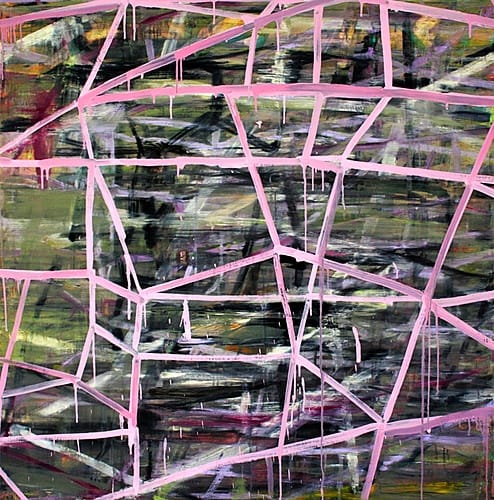Triangular: Andrew Seto and Deborah Dancy
Isoceles, equilateral, scalene, right, obtuse, acute and equilateral. The humble triangles that we all studied in geometry figure prominently in contemporary abstraction, particularly in Andrew Seto and Deborah Dancy’s recent work.

In “Chasing the Light” at Sears-Peyton, Deborah Dancy’s trianglar forms are rooted in linear perspective, architecture, and the visual world. Last year, living in Florence, Dancy was drawn to the layers of history and the ubiquitous grids of scaffolding erected around ancient buildings and frescoes. Like the history of Florence itself, Dancy’s linear forms blur and fade, obscuring older layers in the process of building the new. crisper structures.
Overlaying loosely-painted, brightly-colored armatures over the more muted tertiaries of the underlying layers, Dancy lends her paintings a sense of the contemporary present. As I looked at her sublime, light-filled paintings, I couldn’t help contemplating if, as time unfolds into the distant future, the Modernist grid and its sturdy cousin the triangle will eventually become rusty, faded relics of art history, too.

